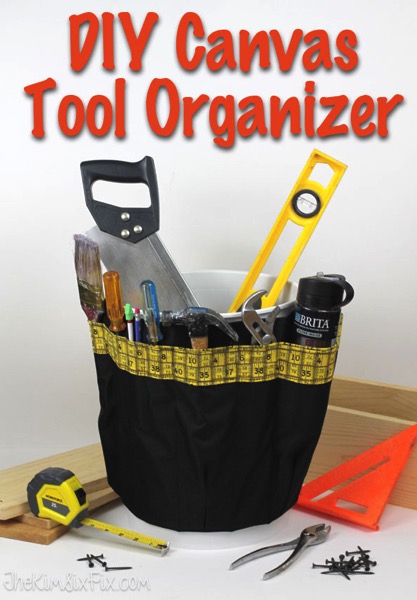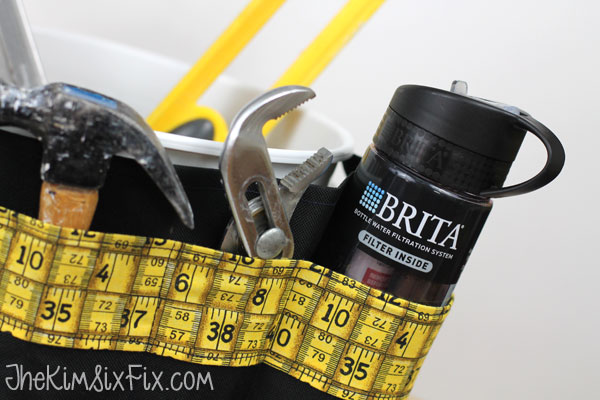 I made sure my organizer had room for both small hand tools (like screwdrivers, wrenches and pencils) along with large pockets that could accommodate larger items, like garden tools, hammers and a Brita water bottle. When working outside or in a hot workshop it is important to keep hydrated and so having water bottle within reach is a must.
I made sure my organizer had room for both small hand tools (like screwdrivers, wrenches and pencils) along with large pockets that could accommodate larger items, like garden tools, hammers and a Brita water bottle. When working outside or in a hot workshop it is important to keep hydrated and so having water bottle within reach is a must. 
With this organizer you can have all your tools close at hand, along with storage for large items in the bucket itself. It is like a portable workshop!
So how did I make it? Spoiler: It took me less than an afternoon...
 I purchased 100% of the supplies at Walmart. The bucket, the fabric, and even the Brita water bottle. Both the bucket and the water bottle can be found in the hardware department (along with the hardware if you want to grab an extra hammer or screwdriver while you are there) and the fabric was in the craft section.
I purchased 100% of the supplies at Walmart. The bucket, the fabric, and even the Brita water bottle. Both the bucket and the water bottle can be found in the hardware department (along with the hardware if you want to grab an extra hammer or screwdriver while you are there) and the fabric was in the craft section.
The first step is to measure the bucket.
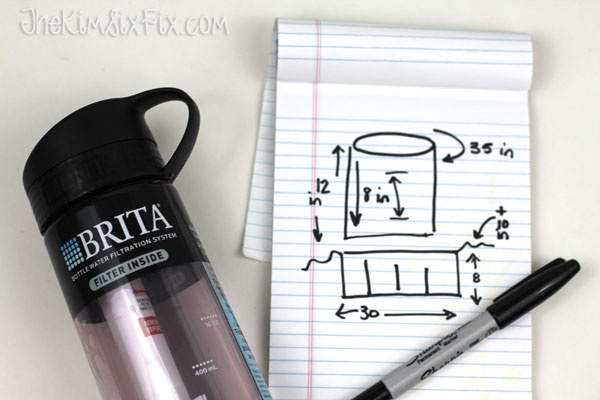
You can make the actual organizer smaller or larger depending on exactly what you want to store in it. Mine ended up being approximately 10 inches tall by 24 inches wide. That meant I wanted the fabric to be at least 30 inches wide to take into account the pockets.

I chose to use vinyl backed canvas since it was waterproof. I knew I may use this organizer in my garden (for trowels and hand rakes etc) and wanted it to stand up to the mud.

To make the project cuter, I added accent fabric as trim. To do this I sewed a strip of fabric along the top of the canvas about 2 inches from the top. (Your accent fabric strip should be about 5 inches wide) To do this ,place them right sides together with the pattern upside down, so when you flip the strip along the seam, you end up with the pattern in the right direction.
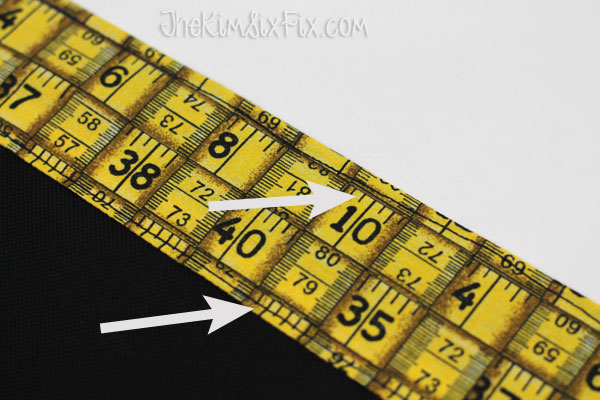 Next fold the fabric over to the back, fold the cut edge under (about 1/2 inch) and then sew down the top and bottom of the strip. This gives you finished edges on the front and back.
Next fold the fabric over to the back, fold the cut edge under (about 1/2 inch) and then sew down the top and bottom of the strip. This gives you finished edges on the front and back.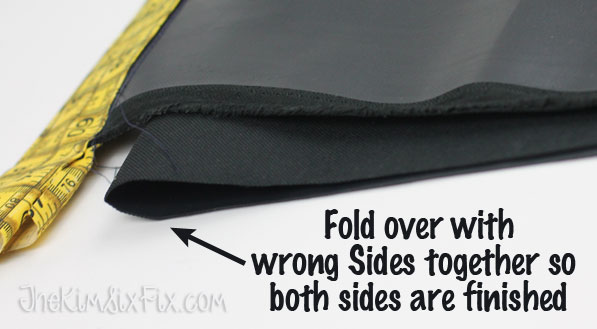 For the backing fabric I wanted it to be finsihed on both ends, so I folded it over (right sides together) and sewed down both outside edges (leaving the bottom open so I could flip it right side out)
For the backing fabric I wanted it to be finsihed on both ends, so I folded it over (right sides together) and sewed down both outside edges (leaving the bottom open so I could flip it right side out)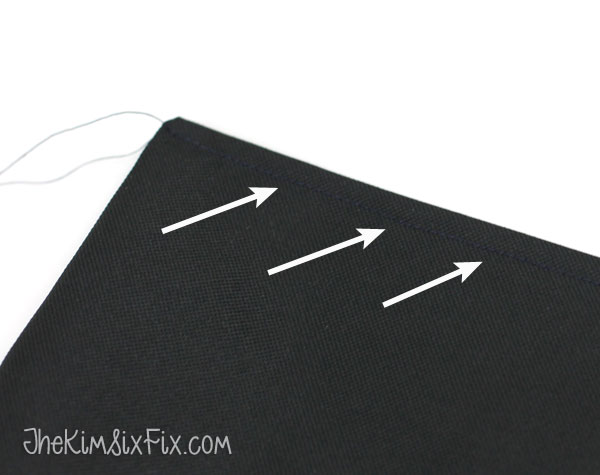 Once it was right side out, I went back and sewed a seam on each edge for a finished look (and to reduce the fullness).
Once it was right side out, I went back and sewed a seam on each edge for a finished look (and to reduce the fullness).
Remember, when settling on the size of your backing, THE WIDTH OF YOUR BACKING WILL BE NARROWER THAN YOUR FRONT POCKETS. It will be the finished size of your organizer and the pockets will be 15-20% wider depending on how deep you want the pockets. I used the water bottle and tools to get an idea of how much fabric I would need for every pocket.
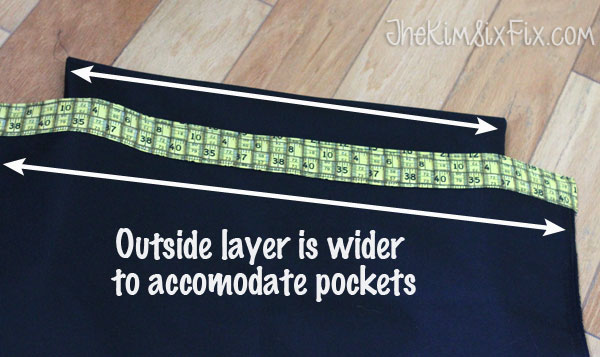 You can see when I laid it out, that the top extends quite a bit past the backing. Further down in the tutorial I'll explain how I dealt with that extra width.
You can see when I laid it out, that the top extends quite a bit past the backing. Further down in the tutorial I'll explain how I dealt with that extra width.As for the final height of the organizr I wanted the back to be taller than the front so I cut the front fabric about 2 inches shorter than the backing. Having the front pocket lower than the back makes it easier to stick the tools in.
 To deal with the extra fullness of the fabric at the bottom where I put in the final seam, I added some darts along the bottom third of the front fabric. You can add darts by folding the fabric and sewing along the fold, or (in my case, because this thick fabric didn't like to fold) I just cut out a "V" shape and sewed along the cut line (right sides together).
To deal with the extra fullness of the fabric at the bottom where I put in the final seam, I added some darts along the bottom third of the front fabric. You can add darts by folding the fabric and sewing along the fold, or (in my case, because this thick fabric didn't like to fold) I just cut out a "V" shape and sewed along the cut line (right sides together). The combined width of the cutouts is approximately the difference in the width between the front and back (taking into account the two 1/4 inch seam allowances in each dart.)
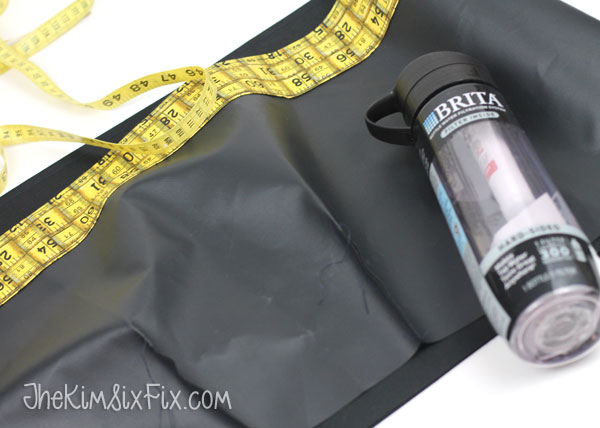
I put more darts in the section of the organizer where I wanted larger pockets and less darts where the pockets were smaller. You could evenly space them if you wanted all the pockets to be the same size.
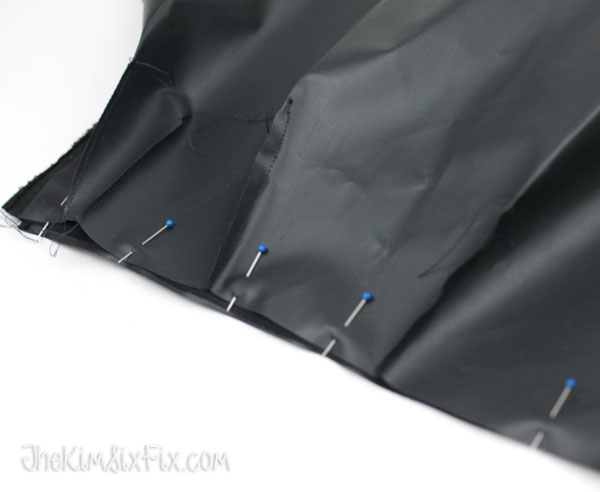
Once the darts were in, the width of the bottoms of both the front and back panel were the same, and it was easy to pin them (right sides together) and sew along all three edges.
 I turned the organizer rightside out and sewed in vertical seams to create the pockets (all the time making sure they were large enough for the tools or water bottle to be accommodated.
I turned the organizer rightside out and sewed in vertical seams to create the pockets (all the time making sure they were large enough for the tools or water bottle to be accommodated. Lastly I sewed on a ribbon on each edge which allows the organizer to be tied and untied from the bucket (or even used as an apron!)
Lastly I sewed on a ribbon on each edge which allows the organizer to be tied and untied from the bucket (or even used as an apron!)  By tying the ribbon above rim of the bucket, it definitely won't slide down even with the weight of heavy tools or a full bottle of water.
By tying the ribbon above rim of the bucket, it definitely won't slide down even with the weight of heavy tools or a full bottle of water.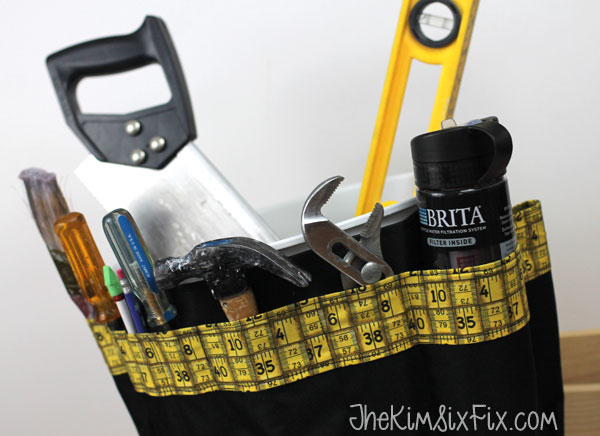 I love the accent fabric with the tape measures on it. And the variation in pocket size allows me to store both large items..
I love the accent fabric with the tape measures on it. And the variation in pocket size allows me to store both large items..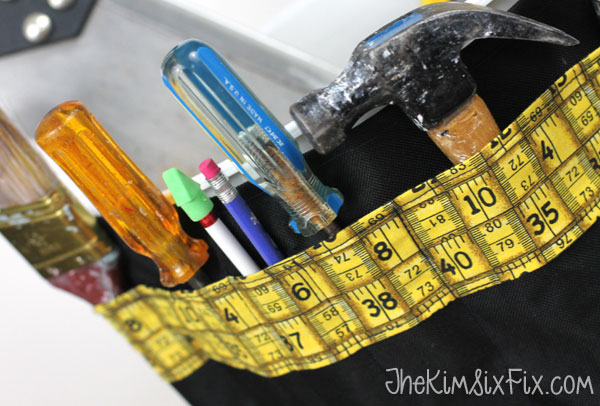 ..and items as small as pencils.
..and items as small as pencils.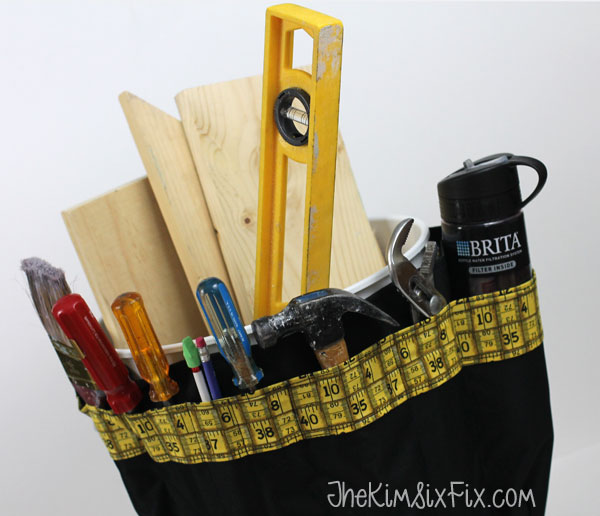 Plus when I have a project, I can fill it up with the lumber and carry it wherever I need to go. All while having my tools and my source of hydration right on board!
Plus when I have a project, I can fill it up with the lumber and carry it wherever I need to go. All while having my tools and my source of hydration right on board!
If you like this project I'd love for you to share it!

